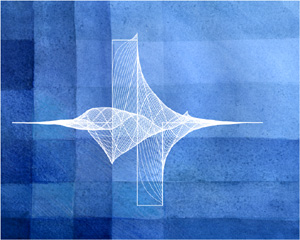| CONTENTS |
|
Splines |
 Splines provide a unifying framework for solving a whole variety of image-processing problems that are best formulated in the continuous domain. Instead of pixels, the image is seen as a continuous, piecewise-polynomial function that is represented by a linear combination of B-spline basis functions. What makes splines especially attractive in this context is that most computations can be made using digital filters. The spline formalism extends Shannon's sampling theory and provides a unifying view of continuous/discrete signal processing. In addition, splines have nice multiresolution properties that make them prime candidates for the construction of wavelets and pyramids. Our team has contributed significantly to the theory and practice of splines, and is internationally recognized from introducing this methodology in signal processing and in medical imaging. The current focus of our spline research is on the development of efficient algorithms for spline processing, the investigation of generalized splines (in one and multiple dimensions), the variational and stochastic aspects of the theory, and the strengthening of the connection between splines and wavelets. |
Current research projects
|
Past research projects
|
Mathematical Imaging |
 Mathematical imaging addresses the problem of the reconstruction of an image given some indirect measurements (e.g., line integrals or interference patterns) of the 2D or 3D structure of an object. Mathematically, this amounts to solving an inverse problem. The difficulty is that the data is noisy and that the inverse of the imaging operator is not necessarily well-defined (ill-posed problem). The key issues that need to be addressed in order to be successful are:
Our primary effort in this area is directed towards the design of algorithms for some of the novel imaging modalities developed by our colleagues at the IOA. |
Current research projects
|
Past research projects
|
Wavelets |
 Wavelets are a powerful way of decomposing signals or images into their elementary constituents across scale (multiresolution decomposition). They provide a one-to-one representation (orthogonal transform) in very much the same way as the Fourier transform does, except that the basis functions are now localized in both space (or time) and frequency. Wavelets have many remarkable properties and are extremely versatile. Our research focuses on the theoretical aspects of wavelets (construction of new wavelet bases) and on their application to biomedical imaging. We were among the first to promote wavelets in medicine and biology. In particular, we pioneered their use for the analysis of functional imaging data (PET and fMRI). We also contributed to the theory in the early 90's by introducing an extended family of polynomial spline wavelet transforms. In particular, we proved that the B-spline wavelets converge to a modulated Gaussian as the order increases, a property that implies that they are optimally localized in sense of Heisenberg's uncertainty principle. A more recent contribution has been the construction of fractional wavelet bases that are tunable in a continuous fashion and that essentially behave like multiscale fractional-derivative operators. Currently, we are furthering our investigation of the operator-like behavior of wavelets, in one or multiple dimensions, as well as their intimate relation with splines. We are devising new approaches to construct wavelets—preferably, non-separable, isotropic or directional—that are optimized for biomedical imaging. In particular, we are adapting the decomposition to the fractal character of certain classes of medical images such as functional MRI, mammographies, and high-resolution CTs (e.g., lungs, trabecular bone). |
Current research projects
|
Past research projects |
© 2022 EPFL • webmaster.big@epfl.ch • 11.08.2022